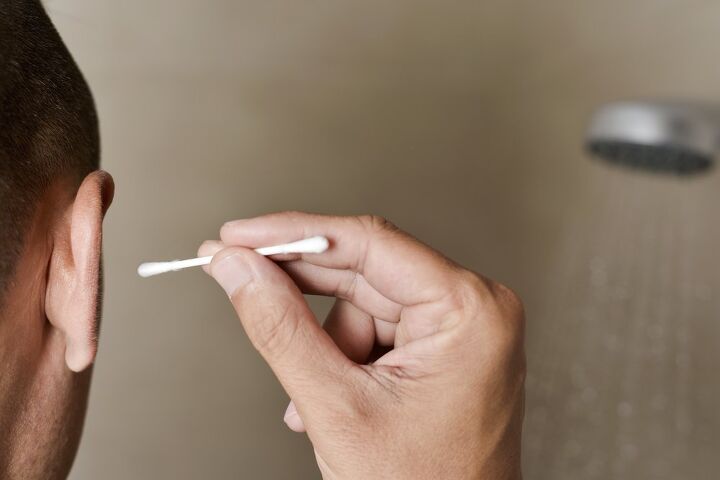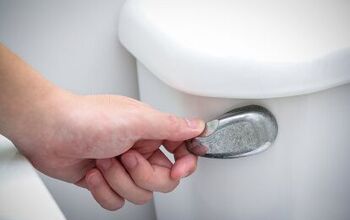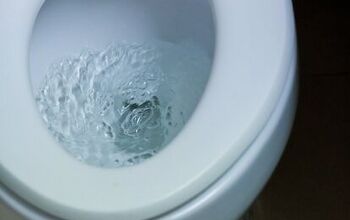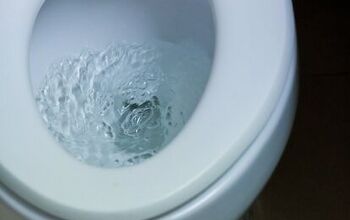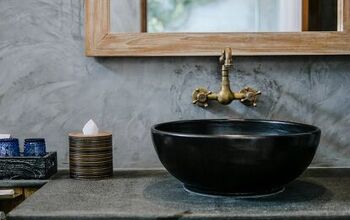Can You Flush Q-Tips? (Find Out Now!)

Q-tips are one of the most common household items. That’s why it’s surprising that so many people don’t know how to dispose of them. Q-tips are small and lightweight, which is why it seems like it wouldn’t be a big deal to flush them down the toilet. However, that is not the case.
You should never flush Q-tips, or any brand of cotton swabs, down the toilet because they do not break down the same way toilet paper does and have an inconvenient shape for getting through the plumbing system. Instead, they will most likely get stuck in the toilet or further down the pipes, eventually causing clogs, backups, and overflows.
Don’t believe us? We’re going to take a closer look at what Q-tips really are and why they can be so harmful to your toilet and plumbing system as a whole.
Do You Need to Hire a Plumber?
Get free, zero-commitment quotes from pro contractors near you.

What are Q-Tips?
Q-tips is the most popular brand of cotton swabs on the market. They are made of 100% pure cotton, paper, and all natural materials. Many other cotton swab brands still use plastic, making them even worse on the environment.
Most people use Q-tips, and cotton swabs in general, to clean their ears. However, professionals actually advise against this as it can actually cause severe ear problems. Other common uses include cleaning dust from devices, applying ointment to wounds and bites, starting fires, removing foreign objects from your eye, and more.
Common Places for Q-Tip Clogs
Your toilet and connecting plumbing system is made up of many different components. That said, Q-tips can stick in multiple spots in your toilet and pipes, and it’s important to know where your clog is happening, so you know how best to deal with it. Here are the most common spots you can find rogue Q-tips:
Toilet Trap
The toilet trap is a curved passage that leads from the hole at the bottom of the toilet bowl to the drainpipe. After you flush a Q-tip, it can shift and lodge itself in the trap way. This will cause the toilet to stop functioning. There are a variety of different types of trap ways, but a few of the most common are S-bend, U-bend, and P-bend.
This refers to the shape of the trap inside the piping, which is designed to be a water barrier to keep your home safe from any gases that come back out of the sewer. However, this shape also provides an easy spot for Q-tips to lay low until more debris— clumps of hair, condoms, wipes, chewed gum, etc.—gets flushed. This can either reveal itself through slow flushing times or your toilet not flushing at all.
The best way to tell if the clog is in the trap is to see if your bathroom sink and tub or shower drains are still working. If the other drains in your bathroom are working properly, the issue most likely lies within the trap.
Toilet Flange
The toilet flange, or closet flange, functions as a mount for your toilet and a mechanical connection between the toilet drain and the home drainage system. It is usually made from PVC, brass, steel, or copper and is sealed to the drain with a wax ring to prevent any leaks.
Closet flanges are generally three to four inches in diameter. Q-tips can easily lodge themselves in this small opening. When this happens, your best way forward is with a high-grade plunger or a snake if you can reach the blockage.
Sewer Line
Even if your used cotton swabs make it through the toilet, they’ll most likely get caught up in the sewer line where tree roots and other debris are a plenty. This will cause an even bigger problem because your entire home can be plugged up. That means anything that you try to put down a drain will either not go down at all or is very likely to come back up.
It’s important to deal with sewer line clogs as quickly as possible since it can cause issues throughout your entire home. If you have a basic understanding of how your plumbing system works, you may be able to fix the issue on your own. All you have to do is turn off the main water supply, locate your sewer cleanout line, and remove the cap to release the pressure.
After that, you can try chemical drain cleaning and mechanical drain cleaning with an auger. If none of this works, call in a professional plumber right away.
How to Remove Q-Tips from the Drain
A clogged toilet can cause a lot of stress but try not to panic. The good news is most people can typically unclog a toilet in minutes even with minimal plumbing experience. To properly troubleshoot your toilet clog, follow these steps.
1. Use a High-Grade Plunger
The first thing you should do is try to plunge your toilet to dislodge the clog. There are two types of plungers that you should have in your house: a sink plunger and a toilet plunger. A toilet plunger has a special end that fits in the bowl, so you can generate a greater force. This way, you can more easily push obstructions down the trap.
It’s true that you can technically use a sink plunger for the toilet, it’s not guaranteed to deliver the best results. Plus, you probably don’t want to be dipping something into your toilet and then back into your sinks.
2. Use an Auger or Drain Snake
If the obstruction is too far down the drain, you may be better off with a snake for manual cleaning. This is a long wire coil that has barbs on the end that can either catch and pull up clogs or break it apart, so it can pass all the way through the system.
When using an auger, make sure to proceed with caution. It’s possible to chip the porcelain on your toilet bowl while clearing the drain, which will leave you with an even bigger issue.
3. Pour Chemicals Down the Drain
When using drain cleaning chemicals, it is crucial to follow the instructions on the bottle to the T. It’s also important not to mix it with any other cleaners. This could create a toxic gas that is harmful to breathe in. You should also wear protective gloves and eyewear to protect yourself during the cleaning process.
You can use drain cleaner as a stand-alone solution or at the same time as plunging and snaking. If you are doing both methods at once, be extra careful. There is a better chance the water can splash around.
4. Call a Plumber
When all else fails, leave it to the pros. Local plumbers know how best to handle clogs, so you don’t have to worry a thing. While this may be the more expensive option, you will save time and energy. Plus, you can have peace of mind knowing your plumbing system is in good hands. Plumbers will have the right tools to figure out the problem and resolve it without damaging your plumbing system.
Related Questions
Are Q-tips recyclable?
No, you cannot recycle Q-tips. However, you can compost them since it has a paper stick instead of a plastic one. Q-tips are also 100% biodegradable when composted as they are made from all natural materials.
Are cotton swabs bad for the environment?
Yes and no. Since Q-tips are so small, many of them end up in the ocean. However, many brands have switched to paper instead of plastic for production, which means they can break down more easily. That said, plastic cotton swabs can be very harmful for ocean animals and entire ecosystems.
Do You Need to Hire a Plumber?
Get free, zero-commitment quotes from pro contractors near you.

Final Thoughts
There are a select few things that should go down your toilet drain: poo, pee, puke, and toilet paper. Almost all other foreign objects can cause clogs and lasting damage to your toilet, pipes, and sewer line. That said, you should save yourself the headache and throw your cotton swabs in the trash.

I am a copywriter and editor based in the Las Vegas area with nearly a decade of experience under my belt writing landing pages, cost guides, blog posts, newsletters, case studies, and social media content. I have a degree in Strategic Communication and experience working in both the account and creative spheres. My goal is to always be discovering new interests and bettering myself as a writer and editor along the way.
More by Kerry Souder



